10+ Years Experience
Specialist Horse Menages

Horse enthusiasts and professionals alike understand the significance of a well-designed menage.
Did you know that the importance of properly sizing a horse menage plays a crucial role in ensuring the safety, comfort, and optimal training environment for both horse and rider?
In this blog post, we delve into the factors to consider, standard sizes, customisation options, surface selection, and tips for proper menage construction.
We’ll explore how proper menage sizing affects the safety and well-being of both horse and rider, how it contributes to an optimal training environment, and the various factors that should be taken into account when determining the size of a menage.
So saddle up and let’s embark on this journey to create the perfect riding space for you and your equine companion, keeping in mind the importance of properly sizing a horse menage.
Creating an optimal equestrian facility requires consideration of factors such as size, discipline, available space and budget.
When designing a menage, the riding discipline should be considered to ensure adequate space for requirements.
Professional tips for proper construction include planning & site selection, drainage systems, and use of resilient surfaces to create a safe environment for horse & rider.
The importance of properly sizing a horse menage cannot be overstated. It not only ensures the safety and comfort of both horse and rider, but also creates an ideal training atmosphere for various disciplines.
Whether you’re planning to build an indoor riding arena or an outdoor horse arena, several factors need to be considered, such as interior heights, width, length, riding discipline requirements, available space and location, and budget constraints.
By taking the time to accurately size your horse, you can create a riding area that caters to your specific needs and preferences, while also providing a safe and enjoyable environment for your horse.
The right arena design will enhance both horse and rider performance, and a well-planned arena size will contribute to the longevity and success of your equestrian facility.
Ensuring the safety and comfort of both horse and rider is of utmost importance when sizing a menage.
Factors such as the size of the horse, the riding discipline, available space, and budget constraints all play a crucial role in determining the appropriate dimensions.
The selection of the proper arena surface, such as silica sand, is also vital, as it directly impacts the overall performance and safety of the arena.
Indoor riding arenas offer the added benefit of protection from inclement weather, allowing for year-round riding, and ensuring a more consistent riding surface, which contributes to the safety and comfort of both horse and rider.
By considering all these factors and selecting the appropriate arena size and surface, you can create an ideal equestrian facility that caters to your specific needs while prioritising the well-being of your horses.
An optimal training environment is essential for both the safety and comfort of the horse and rider, as well as for the horse’s performance.
This may include larger riding arenas for disciplines that require more space, such as show jumping or dressage.
When determining the size of a menage, especially for indoor arenas, factors such as riding discipline requirements, available space and location, budget constraints, and safety and comfort for horse and rider should be taken into consideration.
By carefully considering all these factors and selecting the appropriate arena size and surface, you can create an ideal training environment that promotes the growth and development of both horse and rider.
A well-planned and properly sized menage will not only enhance the overall performance of your horse, but also provide a safe and enjoyable space for you to practice and perfect your riding skills.
When sizing a horse menage, there are several factors to consider to ensure you create the perfect space for your specific needs. These factors include riding discipline requirements, available space and location, and budget constraints.
By taking the time to evaluate and balance these factors, you can create a menage that is not only functional and safe, but also tailored to your individual requirements and preferences.
In the following subsections, we’ll take a closer look at these factors and provide insights and recommendations for each.
This will help you make informed decisions when sizing your menage and ensure that you create a riding arena that meets your specific needs and contributes to the overall success of your equestrian endeavours.
The riding discipline of the horse and rider should be the initial consideration when designing a menage, as different disciplines may require varying sizes and configurations.
For example, the recommended minimum size for an arena suitable for jumping is a minimum of 30 x 50m, while the minimum width for an arena suitable for dressage tests is no shorter than 35/36m, as per industry standards.
By taking the riding discipline into account when sizing your menage, you can ensure the space is adequate for the specific needs and requirements of your chosen discipline.
This will not only enhance the safety and comfort of both horse and rider, but also contribute to an optimal training environment that promotes the growth and development of your horse.
The available space and location are crucial factors to consider when determining the size of your menage.
You should ensure that the chosen location is not only large enough to accommodate the desired size of the menage but also provides ample space for perimeter fencing, access for construction machinery, and any required drainage channels.
It’s important to remember that the size of the menage can also be influenced by planning permission requirements, which may vary depending on your location.
By considering the available space and location, as well as any planning permission requirements, you can ensure that your menage is not only functional and safe, but also adheres to any local regulations and restrictions.
Budget constraints are an important consideration when sizing a menage, as the size and design of the menage will directly impact the overall cost of the project.
Factors such as the type of surface, drainage system, fencing, and lighting must be taken into account when estimating the cost of constructing an outdoor menage.
By considering your budget constraints and prioritising the essential elements of your menage, you can create a space that not only meets your specific needs but also remains within your financial means.
This will help ensure that your menage is a valuable asset to your equestrian facility, contributing to the overall success of your riding endeavours.
While there are standard menage sizes available to cater to the needs of most riders, customisations can be made to better suit specific disciplines and preferences.
The most prevalent standard sizes for a horse menage are 20m x 40m and 20m x 60m, with dressage menages generally measuring 20m x 40m and show jumping menages typically measuring 20m x 60m.
In the following subsections, we’ll explore the standard menage sizes and customisation options for dressage and show jumping menages.
This will help you better understand the available options and make informed decisions when sizing your menage to ensure it meets your specific needs and requirements.
As stipulated by regulations, the size of the arena for dressage menages should be 20 meters by 60 meters.
When constructing a dressage menage, it’s essential to consider the drainage and surface material, as they play a crucial role in the safety and comfort of the horse and rider.
Additionally, planning permission may be necessary for the installation of dressage menages.
By considering these factors and adhering to the standard dimensions for dressage menages, you can ensure a safe and comfortable environment for both horse and rider, allowing them to perform at their best.
When constructing a show jumping menage, factors such as the type of footing, the layout of the jumps, and the height and width of the jumps should be considered.
The recommended size for a show jumping arena is approximately 60m x 35m.
By following these recommendations and considering the specific requirements of show jumping, you can create a menage that caters to the unique needs of this discipline.
This will not only enhance the safety and comfort of both horse and rider, but also contribute to an optimal training environment that fosters growth and development.
When customising menage dimensions, factors such as the intended use of the menage, the size of the horses utilising it, and the available space for construction should be taken into consideration.
Customisations may include adding additional jumps, altering the surface type, and incorporating additional features such as mirrors or lights.
By considering these factors and customising your menage dimensions to better suit your needs, you can create a space that not only meets the specific requirements of your riding discipline, but also provides a safe and enjoyable environment for both horse and rider to thrive.
Selecting the right menage surface is crucial for the safety, comfort, and performance of both horse and rider.
The type of surface, its suitability for the intended discipline, and budget and maintenance considerations should all be taken into account when choosing the right surface for your menage.
In the following subsections, we’ll delve into the various surface types available, their suitability for specific disciplines, and budget and maintenance considerations.
This will help you make an informed decision when selecting the best surface for your menage, ensuring a safe and comfortable riding experience for both horse and rider.
There are various surface types available for menages, including sand, rubber, and synthetic surfaces.
When selecting arena sand, it’s essential to consult with experts, as the quality of the sand chosen will have a significant impact on both the performance of the arena and dust levels.
Each surface type offers its own set of benefits and drawbacks, depending on the riding discipline and specific needs of the horse and rider.
By considering the various surface types and their respective advantages, you can make an informed decision when selecting the best surface for your menage.
When selecting a surface suitable for a specific discipline, it’s imperative to consider factors such as the number of horses utilising the menage, the discipline itself, the impact and movements involved, as well as the health and performance of the horse.
Certain surfaces may be more suitable for specific disciplines and provide better support and cushioning for the horse, reducing the risk of injuries.
By taking these factors into account and selecting a surface that is best suited for your intended discipline, you can create an ideal training environment that not only ensures the safety and comfort of both horse and rider, but also promotes the growth and development of your horse.
When selecting a menage surface, it’s essential to evaluate the initial cost of installation, ongoing maintenance costs, and the size of the menage.
Different surfaces may have varying maintenance requirements and costs, which should be taken into account when making your decision.
By considering your budget constraints and prioritising the essential elements of your menage, you can create a space that not only meets your specific needs, but also remains within your financial means.
This will help ensure that your menage is a valuable asset to your equestrian facility, contributing to the overall success of your riding endeavours.
Constructing a menage that is both safe and functional requires careful planning and attention to detail. In this section, we’ll provide some tips for proper menage construction, including planning and site selection, drainage systems, and the use of resilient surfaces.
By following these tips, you can ensure that your horse is correctly sized and built for the intended purpose, providing a safe and enjoyable environment for both horse and rider.
Whether you’re constructing a new riding arena or upgrading an existing one, these tips will help you navigate the planning process and ensure that your menage becomes a valuable asset to your equestrian facility.
The planning and site selection process are crucial steps in constructing a menage that is both safe and functional.
Factors such as accessibility, proximity to high traffic areas, and the topography of the land should be considered when selecting a site for your home arena.
It’s important to ensure that the chosen location is not only large enough to accommodate the desired size of the menage but also provides ample space for perimeter fencing, access for construction machinery, and any required drainage channels.
By carefully considering these factors and selecting an optimal site for your menage, you can ensure a smooth construction process and create a riding arena that meets your specific needs and preferences.
This will not only enhance the overall performance and safety of your horse, but also contribute to the success of your equestrian facility.
Proper drainage systems are essential for the functionality and longevity of your horse arena.
A well-designed drainage system will efficiently channel water away from the surface, preventing water accumulation and ensuring the correct drainage bed beneath the surface.
By investing in an appropriate, high-quality drainage system, you can ensure the longevity of your menage surface and create a safe and enjoyable environment for both horse and rider.
Proper drainage is not only essential for the functionality of your horse, but also contributes to the overall success of your equestrian facility.
The use of resilient surfaces in menage construction is essential for ensuring the safety and comfort of both horse and rider.
Proper ground works and preparations, including correct drainage and membranes, are vital for a successful menage surface.
Surface types such as rubber and synthetic surfaces can provide additional cushioning and support for the horse, reducing the risk of injuries.
By considering the various surface types available and selecting the most appropriate one for your specific needs and riding discipline, you can create a menage that not only meets your requirements but also prioritises the well-being of your horses.
A resilient surface will not only enhance the safety and comfort of both horse and rider, but also contribute to an optimal training environment that fosters growth and development.
In conclusion, properly sizing a horse menage is a crucial aspect of creating a safe, comfortable, and optimal training environment for both horse and rider.
Factors such as riding discipline requirements, available space and location, and budget constraints should be carefully considered when determining the size of your menage.
Additionally, the selection of the appropriate surface type and the implementation of proper drainage systems play a significant role in the overall safety and functionality of your menage.
By considering these factors and following the tips provided in this blog post, you can ensure that your horse is correctly sized and built for the intended purpose, providing a safe and enjoyable environment for both horse and rider to thrive.
With careful planning and attention to detail, your horse will become a valuable asset to your equestrian facility, contributing to the overall success of your riding endeavours.
For the majority of private use, a ménage of 40 metres long x 20 metres wide is generally considered to be suitable.
However, for more advanced activities like dressage and jumping, you may want to make it larger at 60 metres long x 20 metres wide.
It is important to consider the need for planning when building a horse menage.
If structural changes are required, such as digging out the ground and installing drainage, then planning permission is necessary.
Other aspects of the menage, such as surfacing, may also require approval. It is essential to research local regulations before beginning any project.
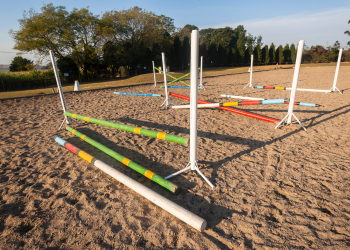
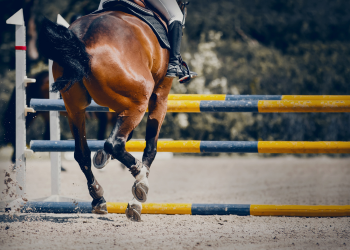
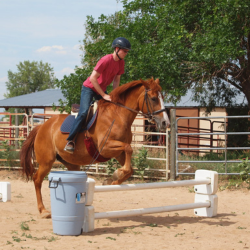
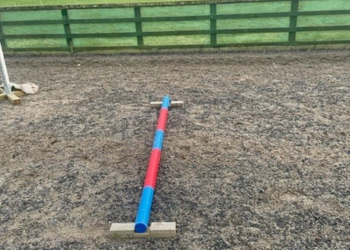
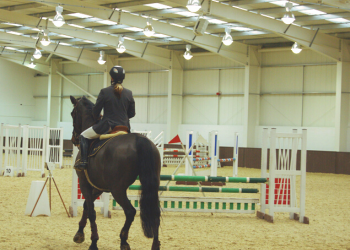
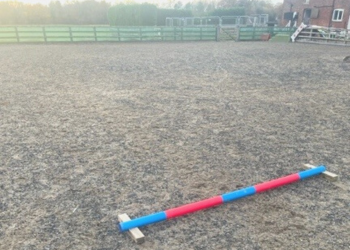
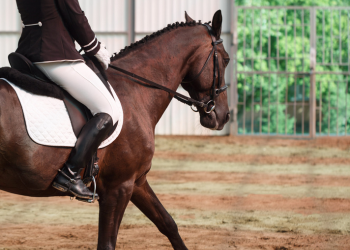

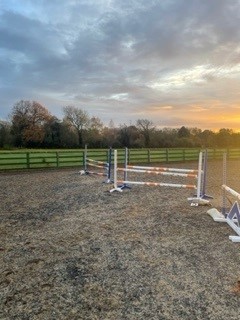
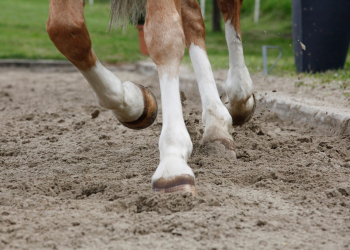
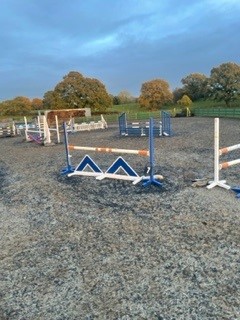
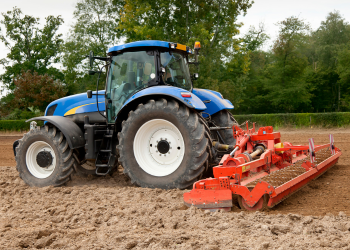

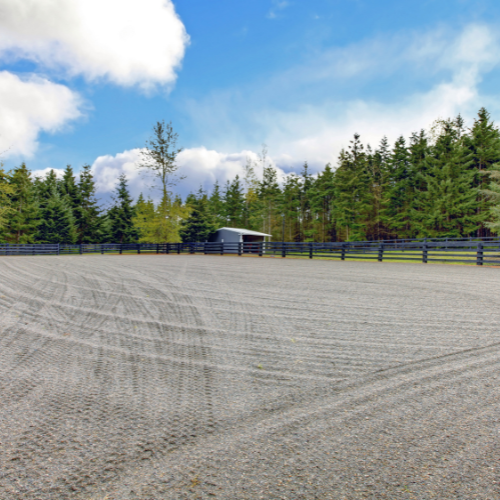

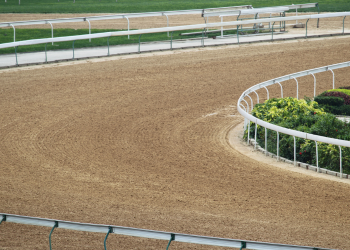
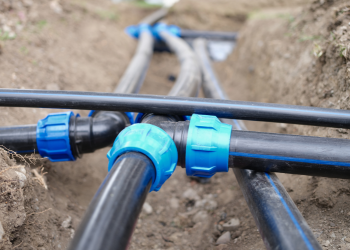
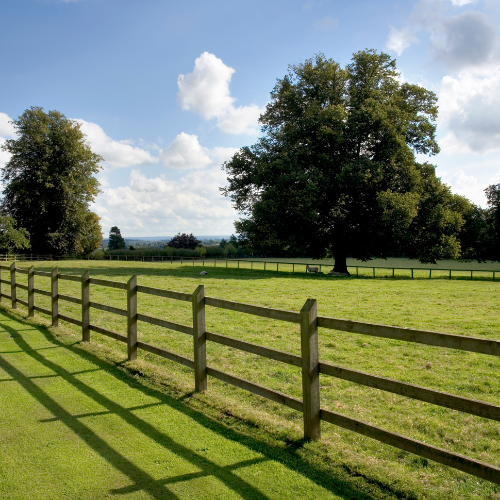
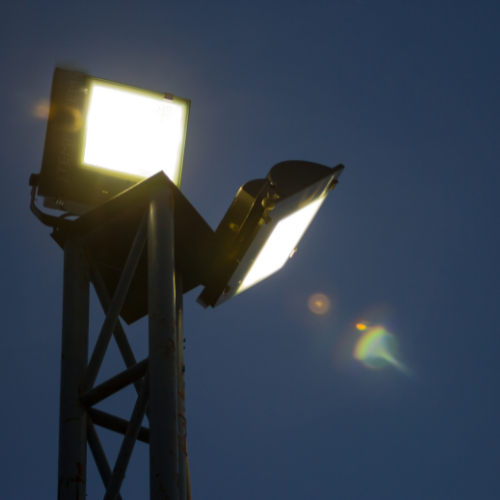
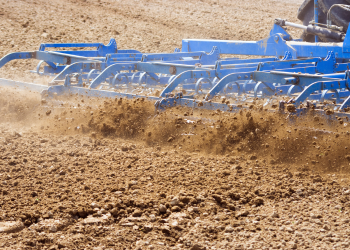
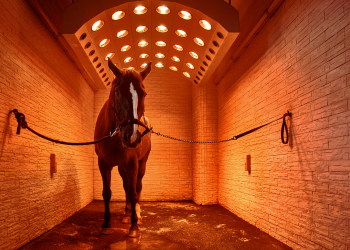


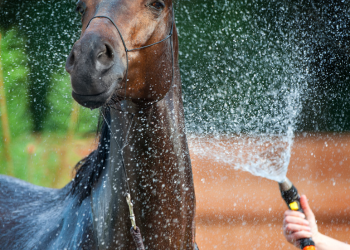
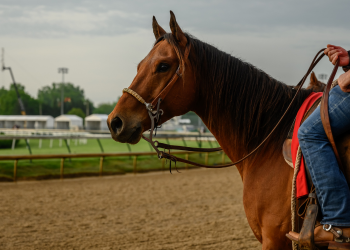
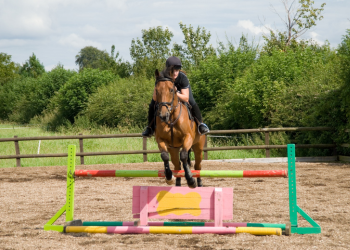
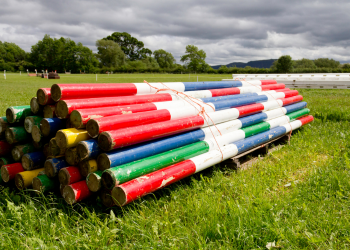
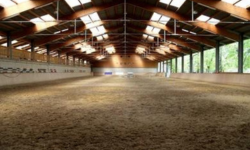
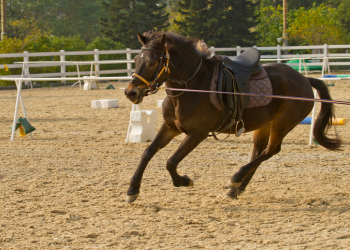

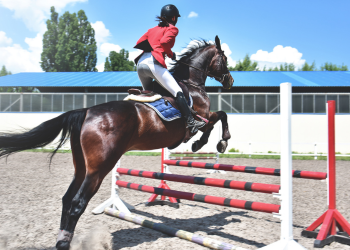
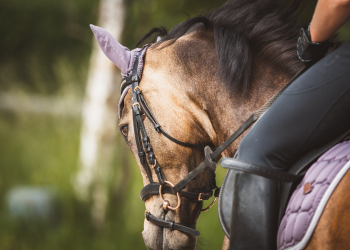
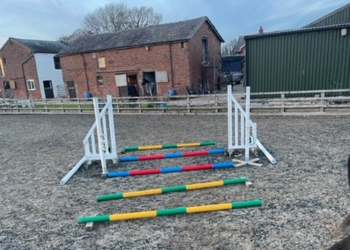

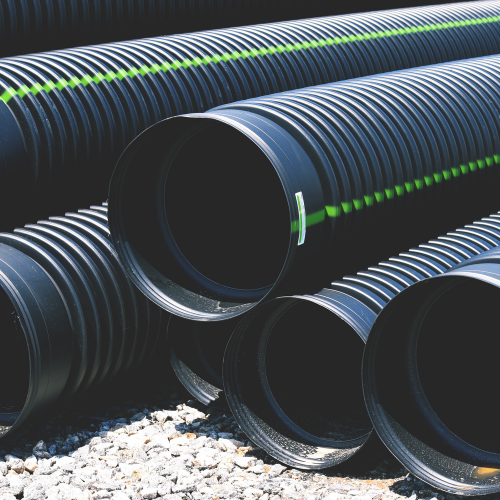
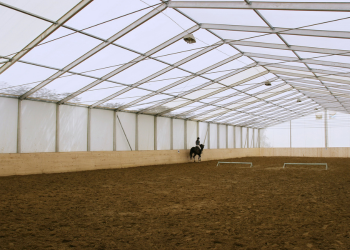
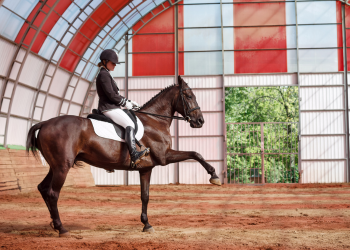
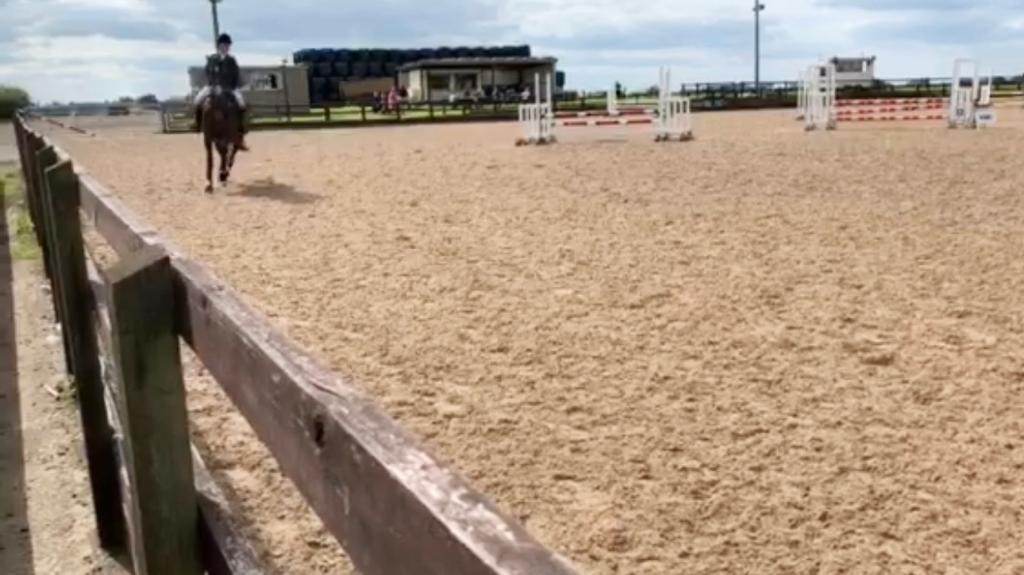
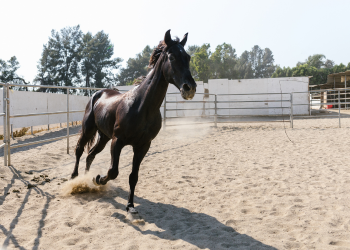
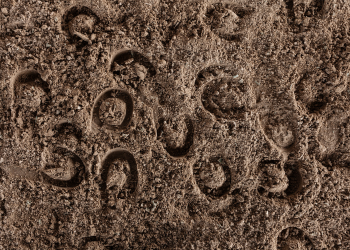

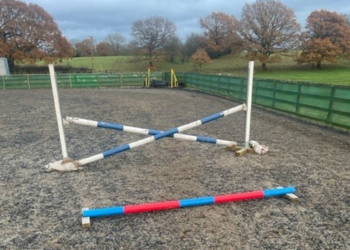


We Aim To Reply To All Enquiries With-in 24-Hours